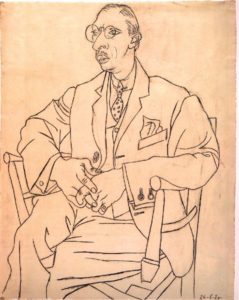The Forty Part Motet-Janet Cardiff
I was not able to attend to visit to the LACMA this Saturday, so I am choosing to write about an experience I had at the High Museum of Art, in Atlanta (my hometown). The Forty Part Motet was a sound installation the High Museum had a few years ago. I had no idea that this work was going to be at the museum the day I went, and I just stumbled upon it while visiting. It is a little hard to explain, but the instillation was comprised of forty separate free standing speakers, each with a different members of a choir singing a hymn composed in the 1500’s. You could walk the circumference of the speaker circle and hear each voice individually and when you stood in the middle, you could hear the full choir. It was by far the coolest piece of art I have ever experienced, and it fits really well into what we’ve studied because its such a perfect combination of the “modern” (technology) and the old (a 600 year old hymn.) Experiencing it in person was central to being able to fully enjoy the work, as there would not really be any other way to truly experience it. At risk of being overly effusive, experiencing it was one of the most memorable parts of my life thus far.

